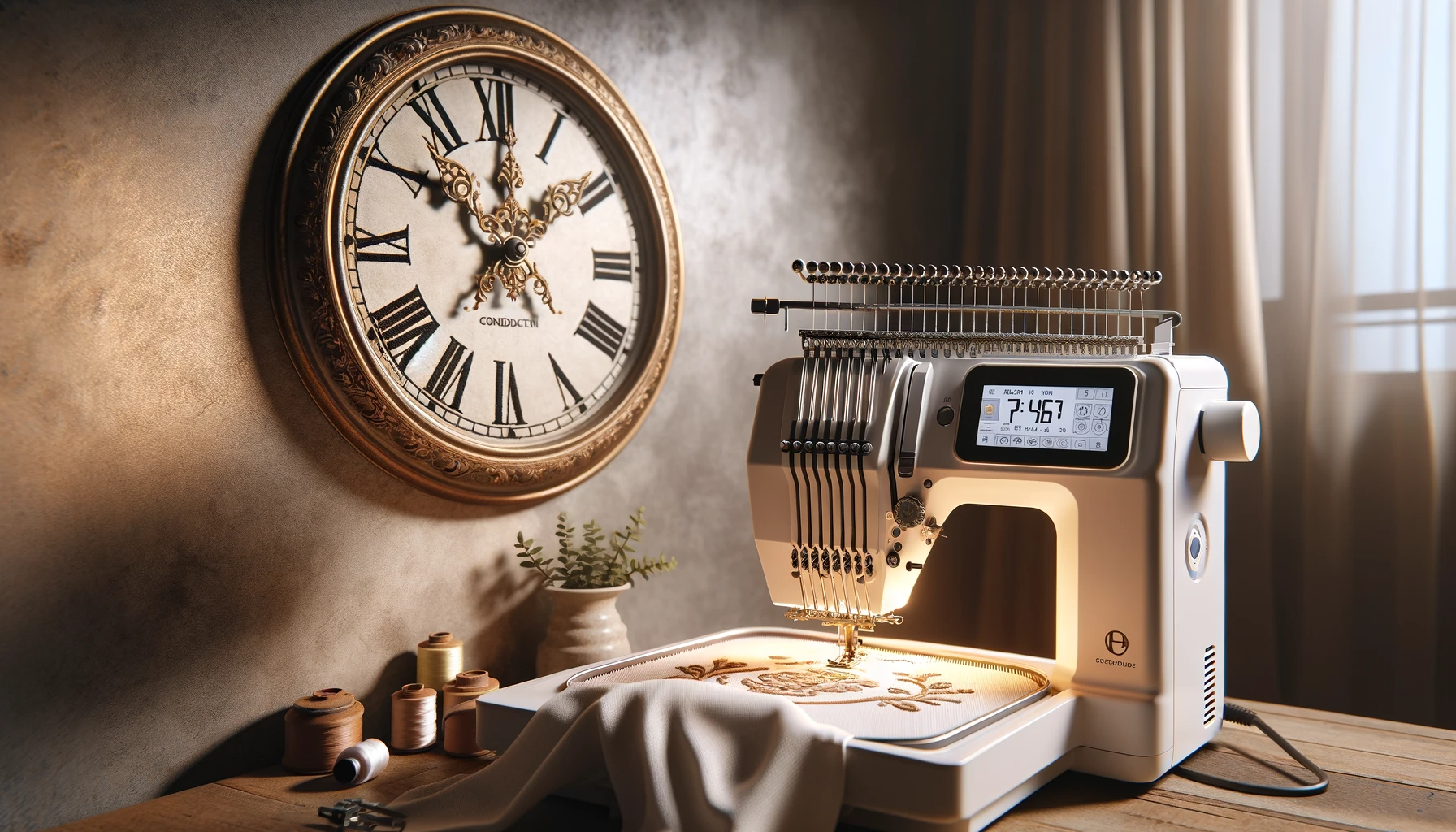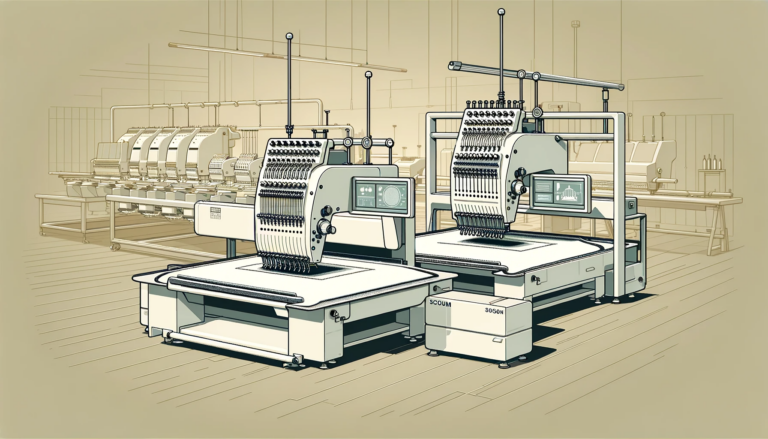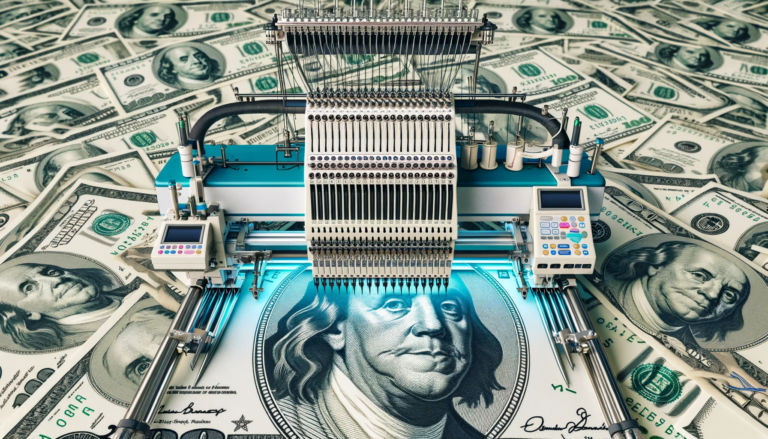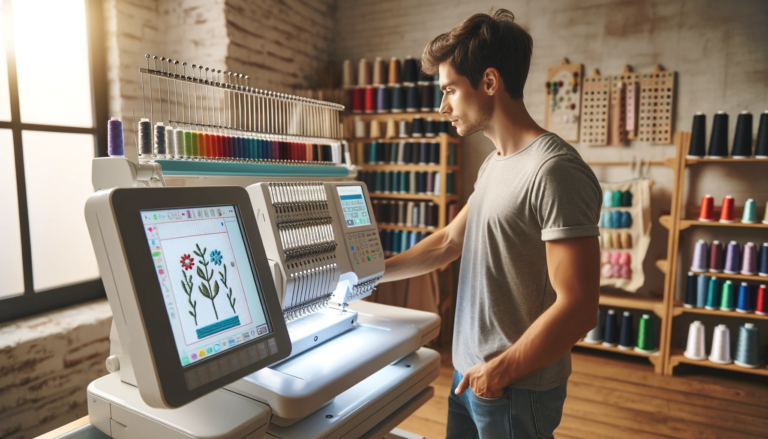Determining How Long It Takes to Embroider a Design
Explore the surprising intricacies of embroidery timing, from stitch counts to machine types, and learn how to estimate embroidery project durations accurately.
Key Takeaways:
- Design Complexity Matters: The number of stitches and the type of design significantly influence embroidery duration.
- Machine Type is Crucial: Multi-needle machines offer efficiency, while single-needle machines require more hands-on time.
- Preparation and Cleanup: Time spent setting up and finishing a project can be as significant as the embroidery itself.
- Estimation Techniques: Learn to use your machine’s display and embroidery software for the most accurate time predictions.
Embroidery, often perceived as a quick craft, can be surprisingly time-consuming.
When I first used my embroidery machine, I anticipated a swift process: load the design, press start, and watch the magic happen. However, I soon discovered that complex designs could take hours on my single-needle machine, especially those with over 100,000 stitches.
Understanding Embroidery Time
Whether you’re running an embroidery business or indulging in a hobby, understanding how to estimate embroidery time is crucial.
It helps business owners set realistic customer expectations, and hobbyists plan their projects effectively. Additionally, customers ordering custom embroidery items should understand the time involved in creating unique pieces.
Several parameters significantly impact the time it takes to complete an embroidery project:
- Stitch Count and Design Complexity: More stitches mean more work for the machine. Additionally, some stitches are more time-consuming to create, and techniques like applique or 3D foam embroidery require extra user input.
- Embroidery Machine Type: Multi-needle machines are more efficient, switching thread colors automatically. In contrast, single-needle machines, like mine, need manual intervention for thread changes, adding to the embroidery time. Machines that automatically cut jump threads save time compared to those requiring manual trimming.
- Machine Speed: Embroidery machines vary in their stitching speeds. For instance, my Luminaire machine has a top speed of 1,050 stitches per minute (spm), but not all stitches are created at this speed. Commercial machines often stitch faster and handle complex stitches more efficiently than home models.
- Setup and Cleanup: Preparing the machine and materials can be time-consuming, especially for tricky blanks like hats. Post-embroidery cleanup, such as trimming stabilizers and loose threads, also adds to the overall project time.
- Order Size: For businesses, the size of the order greatly affects turnaround time. A single shirt might be done in half an hour, but 100 shirts require a significantly longer time frame.
Estimating Embroidery Time Accurately
To accurately estimate the time for an embroidery project, consider these two methods:
- Machine Estimations: Many embroidery machines display the expected stitching time for a loaded design. For single-needle machines, though, add a minute for each thread change. For complex techniques like applique, add extra time for manual interventions.
- Embroidery Software: Tools like Embroidery ToolShed allow you to input design and machine parameters to calculate the stitching time. Don’t forget to include preparation and finishing time in your estimates.
Approximate Time Estimates
As a general guideline, using an average speed of 700 spm for a single-thread color design, 1,000 stitches take about 1.43 minutes, 10,000 stitches take 14.3 minutes, and 100,000 stitches require 143 minutes.
Remember, these times will vary with additional colors, slower speeds, and extra prep and finishing work.
Real-World Turnaround Times
Inquiring with local embroidery businesses, I found that turnaround times vary. Some, like the embroidery business in my local mall, offer same-day service for single items, while others typically promise a week or less for custom orders.
In summary, several factors, including order size, design size, thread colors, and machine speed, dictate how long it takes to complete an embroidery project. While there’s no one-size-fits-all answer, understanding these variables will help you better estimate the time needed for your specific embroidery needs.




